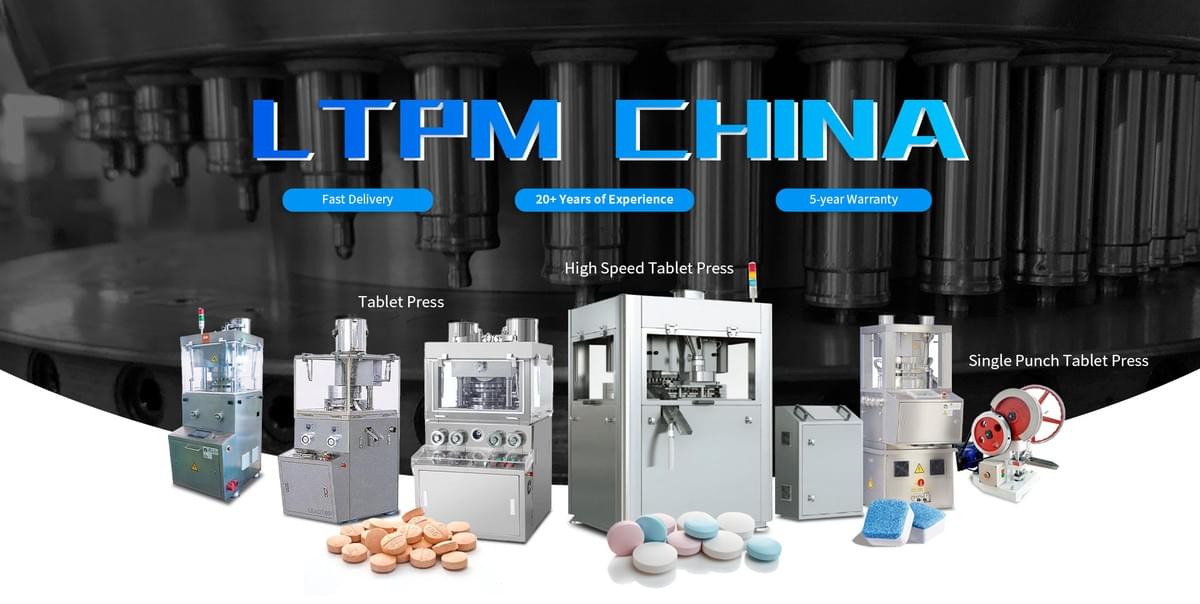Tablet compression machines are integral to the pharmaceutical industry, ensuring that granulated or powdered materials are efficiently transformed into solid tablets with precise dosage, shape, and size. These machines are essential for maintaining consistency, uniformity, and high production efficiency in large-scale pharmaceutical manufacturing.
Key Components of Tablet Compression Machines
1. Hopper: Holds the granulated material and feeds it into the machine.
2. Feeder: Controls the flow of material into the die cavity, ensuring consistent dosing.
3. Die: Shapes the tablets by determining their size and dimensions.
4. Punches: Compress the material inside the die to form the tablets.
5. Cam Track: Manages the movement of punches during the compression process.
6. Compression Zone: The area where the actual tablet formation occurs under controlled pressure.
7. Ejection System: Removes the finished tablets from the compression zone for further processing or packaging.
Types of Tablet Compression Machines
1. Single Station Tablet Press: Known for its simplicity, it is ideal for small-scale production or laboratory use.
2. Multi-Station Tablet Press (Rotary Press): Suitable for high-volume production, this machine allows for simultaneous compression of multiple tablets.
Common Issues and Solutions in Tablet Compression
1. Capping and Lamination: Adjust compression force, improve granulation, and use high-quality tooling to avoid these defects.
2. Weight Variation: Ensure consistent powder flow and proper machine settings.
3. Sticking and Picking: Enhance granulation, increase lubrication, and use anti-adherent agents.
4. Chipping: Adjust ejection settings and maintain tooling to prevent tablet edge breakage.
5. Cracking: Optimize granulation and compression speed to reduce stress during ejection.
Optimizing Tablet Compression Processes
Importance of Granulation Quality
The quality of the granulated material is critical in tablet formation. Proper granulation ensures uniformity, prevents issues like capping or lamination, and enhances tablet hardness and integrity. To optimize granulation:
· Maintain Moisture Balance: Ensure the granules have the right moisture content. Over-dried or too-moist granules can lead to defects such as sticking or cracking.
· Uniform Particle Size: Ensure the granules are uniform in size. Large variations can cause weight inconsistencies and affect tablet compression quality.
· Appropriate Binder Usage: Use the correct amount of binder to ensure the granules stick together properly during compression without causing over-lubrication or sticking.
Precision in Tooling
Tooling, which includes the punches and dies, plays a crucial role in tablet uniformity and production efficiency. Regular maintenance and precise calibration are essential:
· Tooling Inspection: Regularly inspect punches and dies for wear and tear. Worn-out tools can cause chipping and weight variation.
· Lubrication: Adequate lubrication reduces friction between the punches and dies, ensuring smooth operation and prolonging the machine’s lifespan.
· Tooling Alignment: Ensure punches and dies are correctly aligned to prevent uneven pressure distribution, which can cause capping and lamination.
Optimizing tablet compression processes involves a combination of high-quality granulation, precise tooling, controlled compression force, and regular machine maintenance. By focusing on these areas, manufacturers can ensure consistent tablet quality, reduce downtime, and enhance overall production efficiency.
For those seeking advanced tablet compression solutions, explore our customizable tablet compression machines that come with a five-year warranty. Visit our tablet press to learn more and optimize your tablet production today.

